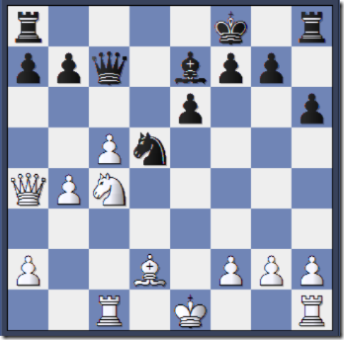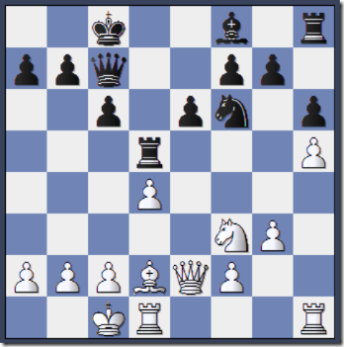FIDE candidates: No KIDchen sink, and game five preview
Congratulations to Gata Kamsky and Peter Leko, who already won their matches.
Gurevich repeated the endgame from the classical Nimzo main line that was played in game two. He tried the same line that Kramnik used last year to beat Leko, but Peter had prepared the interesting move 16..f5.
Kamsky and Leko now have a few extra days to prepare for their next match.
1. Carlsen - Aronian
The same situation of game three, again, with Carlsen being one point behind. This is Carlsen's last game with White, so it will be very important for him to win. He won't be able to surprise Aronian with the same line again, though. Maybe 1.d4, this time?
3. Ponomariov - Rublevsky
In game three Ponomariov played 1.e4. In the Paulsen Sicilian, after
1.e4 c5 2.Nf3 e6 3.d4 cxd4 4.Nxd4 Nc6 5.Nc3 a6 6.Nxc6 bxc6 7.Bd3 d5 8.O-O Nf6
This position had already occured last year in a game between the same players. Last year Ponomariov played the main line, 9.Re1 and won. In game three he preferred 9.Qe2, and lost. The obvious question is, why did Ponomariov not play the main line again?
The comments on the official site mention that after
9.Re1 Be7 10.e5 Nd7 11.Qg4 g6 12.Na4 Qa5 13.Bh6
where Rublevsky played 13..Qb4 last year, the move 13..c5 is better.
In Khalifman's excellent book "Opening for White according to Anand, part 9", last year's game is also analysed. He analyses that Black was not worse in that game as late as move 28, and recommends for White to play 12.b3 instead of 12.Na4. Khalifman also mentions improvements to the game Carsen - Mamedyarov cited mentioned on the official site.
I think Ponomariov should have a look at Khalifman's analysis - it wouldn't be the first time that even on the highest level these books can be used with success.
4. Gelfand - Kasimdzhanov
In game three Gelfand tried the ultra-sharp and highly theoretical Moscow gambit, but Kasimdzhanov was very well prepared. Gelfand is a bit in Zugzwang in his last game with White. Should he play this risky line again, trying to use his advantage of the White pieces with sharp play, but risking a fatal loss? Or should he play something safe, but then face the final game with Black? I think his decision will depend on concrete analysis.
6. Grischuk - Malakhov
Grischuk is almost home, Malakhov has to win with Black. I am again betting on 1.e4 c5 2.Nf3 g6.
7. Polgar - Bareev
Judith Polgar lost the fourth game without throwing the King's Indian KIDchen-sink at Bareev.
Bareev only needs a draw from this game to win the match. Polgar must prepare something in the Caro-Kann lines that were already discussed, or play a different line (maybe 3.e5, or 3.f3).
8. Adams - Shirov
Shirov lost game four with White. He is now one point behind. Since he wasn't able to win a game with White yet, it may not be the best plan to play for a draw in game five. Najdorf, anyone?
Labels: chess



